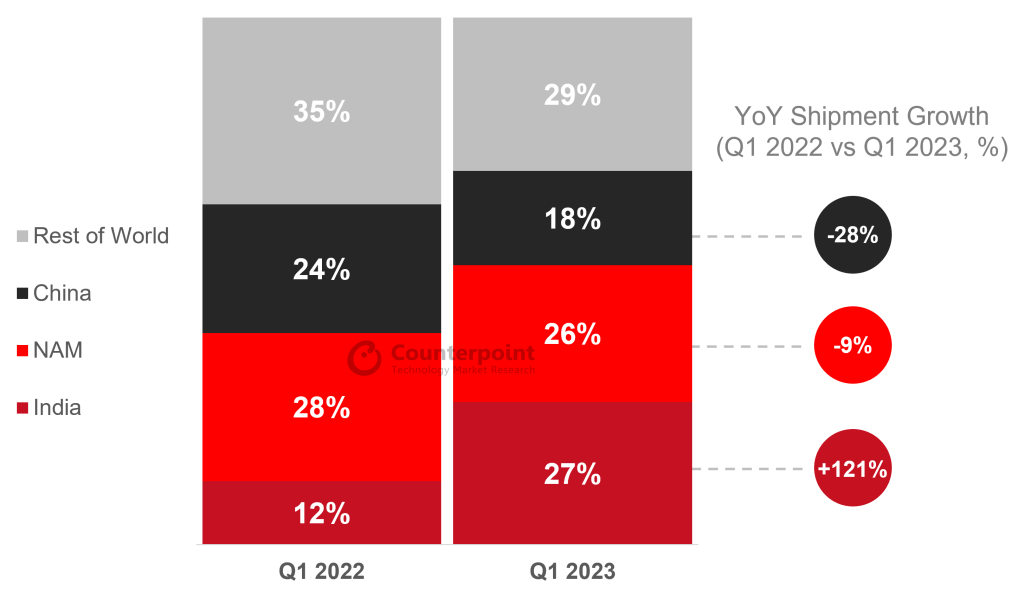Indian smartwatch brand Fire-Boltt surpassed Samsung to take second place in the global smartwatch market. Despite Samsung’s growing popularity in North America, its shipments outside the region faced a significant decline, resulting in a narrow victory for Fire-Boltt.
Affordable Fire-Boltt smartwatches gain popularity in India
According to Counterpoint Research, Fire-Boltt’s share in the first quarter of 2023 reached 9% of shipments, while Samsung’s share in global shipments was 9%. This small difference has allowed Fire-Boltt to surpass the Korean tech giant in the global rankings.
Meanwhile, Apple maintained its lead in the smartwatch segment, despite its share of global shipments falling from 32% in the first quarter of 2022 to 26% in the first quarter of 2023.
Although Huawei experienced a decrease in shipments in China, LATAM managed to limit the loss of its global shipment share to 9% due to increased shipments to regions such as MEA and India. However, Huawei could not maintain its position on the global podium of smartwatches.
Fire-Boltt’s success can be attributed to the growing smartwatch market in India. Smartwatch shipments in India increased significantly from 12% in the first quarter of 2022 to 27% in the first quarter of 2023. Fire-Boltt’s dominance in the Indian market played an important role in its victory over Samsung.
Analysts attribute the growth of the Indian smartwatch market to factors such as affordability, higher consumer demand and a wider price range of smartwatches compared to other markets. Fire-Boltt’s emphasis on more affordable options resonated with Indian consumers and contributed to the brand’s success.
It is important to note that the analysis covers both smartwatches with high-end operating systems (HLOS), such as the Samsung Galaxy Watch 5 and Apple Watch, and basic smartwatches with lighter operating systems that do not support third-party apps. The affordability and increased functionality of these basic smartwatches have made them particularly popular in markets like India, where they have emerged as a viable alternative to smartbands.














